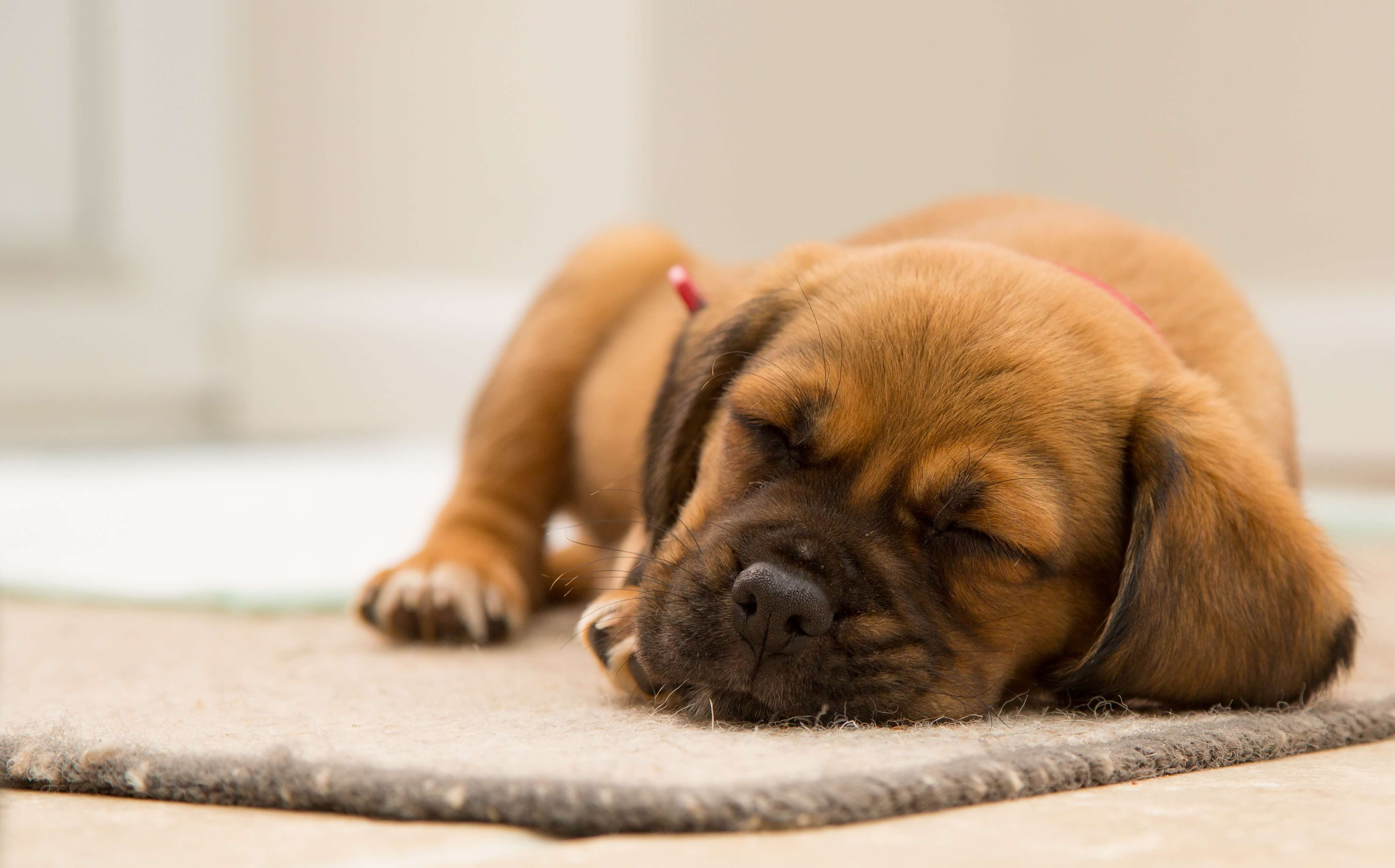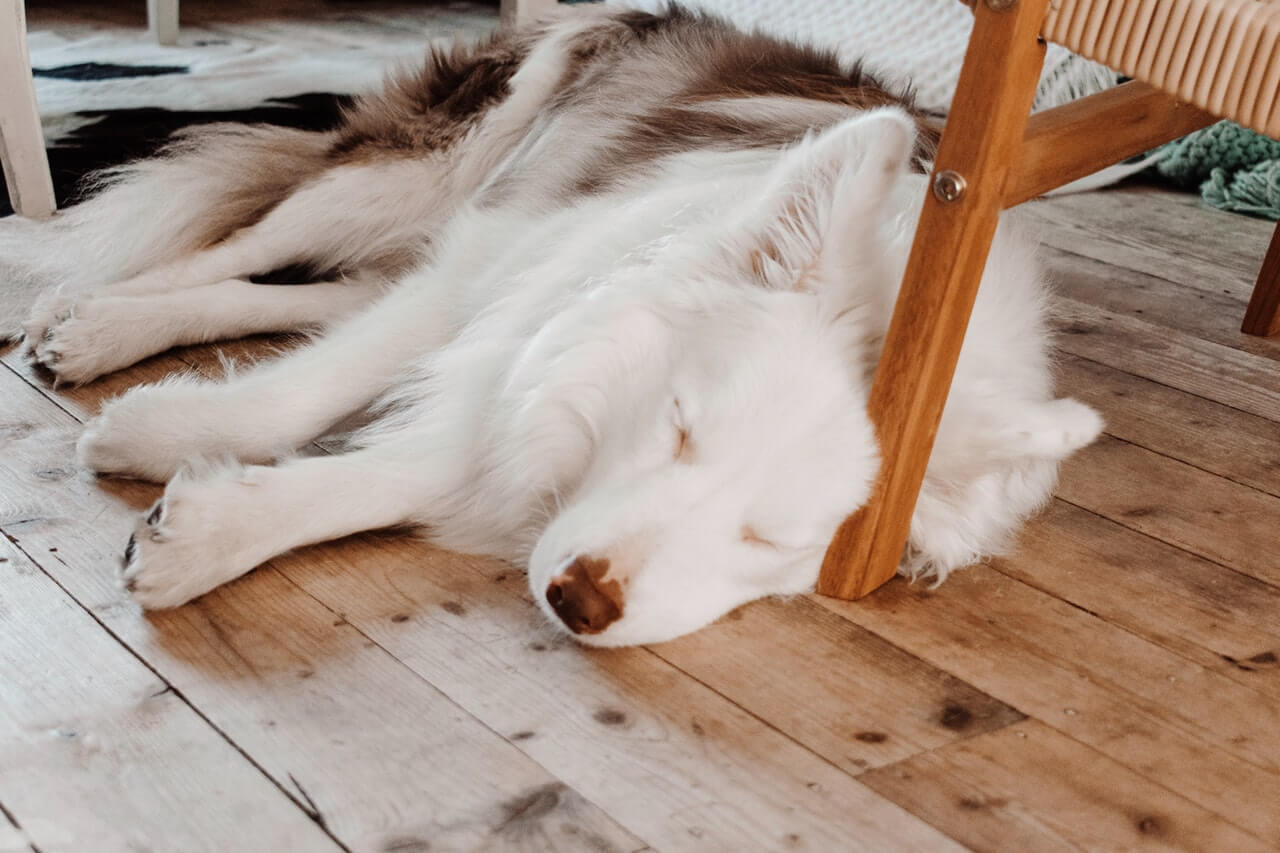2018-11-16

Dogs live in a natural way with humans and love social activity. They are an important part of families, often taking on the role of a companion or working dog. This ‘evolution’ over thousands of years has led to a close relationship between the owners and the dogs. Dogs spend most of their time in our company and always enjoy it. However, this close relationship could be a potential problem for your furry friend and cause separation anxiety when you leave the house. Today, we will discuss this issue and treat it in different ways.
In this article
1. What is separation anxiety in dogs?
2. How to deal with separation anxiety in dogs?
2.1. Prepare an isolated room/area
2.3.2 Give your dog some exercise before you leave
2.3.3 Leave treats and activate background music or conversation in the room
What is separation anxiety in dogs?
Separation anxiety in dogs is always invisible and ignored. It always shows in the form of distressed or destructive behavior that pet parents often mistake for other behavioral problems like disobedience or defiance. The most common signs of separation anxiety in dogs are whining, barking, howling, panting, pacing or even coprophagia. They could also scratch furniture, chew scented items, destroy items in the house, refuse to go outside, and try to escape from the room or cage. The behavior can last for a few minutes to a whole day.
You may think that separation anxiety only occurs in dogs when they stay home alone. However, apart from loneliness, this can be triggered by many factors, including:
• Change of pet owner
• Leaving the mother or the dog’s litter prematurely (especially in the case of premature adoption or the death of a friend of the pet)
• New social occasions or places
• Changes in the environment
• Emotional changes by the owner such as neglect
• Lack of training
• Heredity
• Boredom

How to deal with separation anxiety in dogs?
The treatment of an anxious dog should, first and foremost, relieve his emotions without medications, so that you can succeed alone with persistent practices. Most cases of separation anxiety in dogs relate to our absence due to work or errands. It is advisable to teach your dog how to get used to your absence so that he learns that staying at home is comfortable and relaxing. Treating dog anxiety helps your dog eliminate the fear that you will leave the house. Here is a list of treatment for anxiety:
Tip 1: Prepare an isolated room/area
First of all, you need to decide where your dog should stay if he has to stay home alone. The owner could lock the dog in the kitchen or in a room to avoid disorder in other places. Often, however, people find that the dog gets more aggravated and avoids this place afterwards. The dog seems to recognize that the owners bring him to this area when they leave the house. In view of the safety issue, we recommend that you change your method by using stair gates that can serve the same purpose. Install the stair gates around the area of your choice and prepare a comfortable bed, water bowl and other supplies in this room. If he is accustomed to using puppy pads, they must also be placed in this location. Put some items, such as clothes that have your scent, into his bed. Then you can bring your doggie into the area/room and offer some tasty dog treats to distract his attention. Chewing can effectively distract him and prevent anxiety.
In the beginning, you can stay with him but not interact with him. Then open the stair gates and do whatever you need to do at home, but do not forget to watch your dog at the same time. This is a process of building space between you and your dog. If he does not leave the area and enjoys staying there, congratulations! You have successfully completed the first step! But if your dog still follows you, repeat this step until he can spend a short time alone in the area.
Tip 2: Practice phase
After your dog gets used to being in the area, you can quietly close the stair gates and get ready to go outside.
Change your signal to leave the house. Wear your outdoor clothing 15 minutes before your departure and prepare the keys while you watch him silently. If he behaves naturally, you can open the door and pretend to leave the house, but observe the situation behind the door or watch the monitor. Come home After a few minutes, come back home and open the gates. If he behaves relaxed without any signs of anxiety, you could give him treats and praise, which he recognizes that this is a rewarded training. Then you can extend the period of your absence so that your dog can get used to the fact that you are not always at home. However, if your dog still feels uncomfortable, especially if he is a puppy or a new dog, you can accompany him into the room to calm him down, but do not interact with him.
Tip 3. Intensive practice
If your dog has adapted to your short-term absence, you could start the intensive practice by leaving the house to work.
• Goodbyes and Hellos. Avoid saying goodbye to your dog with emotion and say hello when you come back. Since your dog can sense your feelings out of your voice, which can influence his mood, you should say goodbye as well as hello, in a calm voice.
• Give your dog some exercise before you leave. Exercise can make your dog tired, which is a good idea as it calms him down. Go outside and exercise him for at least 30 minutes, which also causes him to go to the bathroom. Afterward, his attention will turn to food and sleep.
• Leave treats and activate background music or conversation in the room. Hiding treats in the room can distract your dog’s attention and temporarily forget about your absence. Also, soothing pure sounds or conversations help him to calm down and fall asleep quickly.